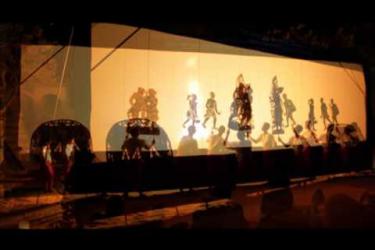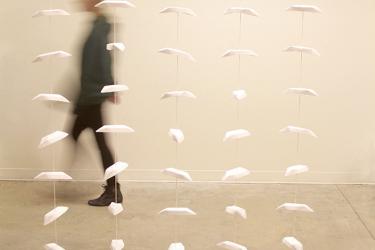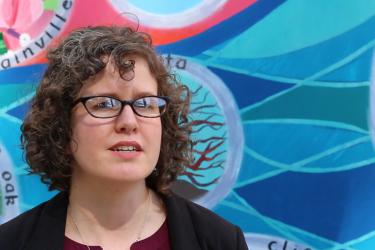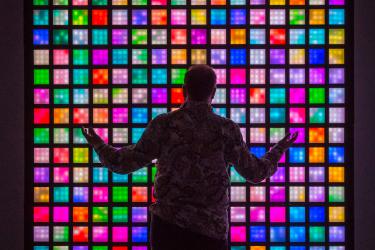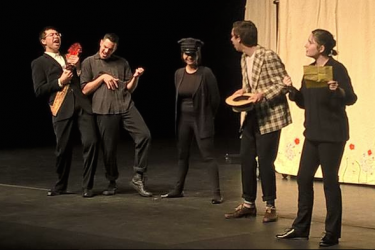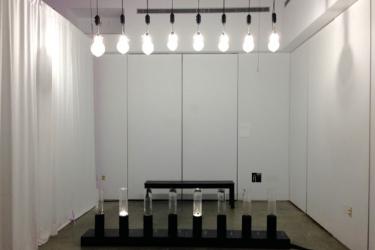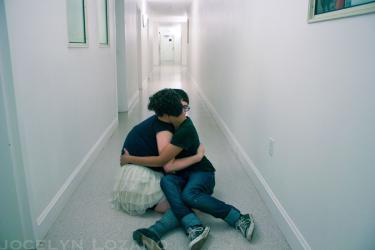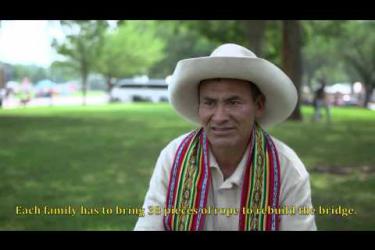
You are here
Works By Students
Art Department alum Erick Medel writes, "I re-present physical manifestations of class structures at the intersection of photography and sculpture. My work deals in constructions of normativity, and their role in repression today.
The Happy Valley Band is a deconstruction of the Great American Songbook through the use of state-of-the-art machine listening technologies.
For Film and Digital Media senior Marisol Medina-Cadena, witnessing the bridge construction on the National Mall was not only a spectacular engineering feat but also a great visual metaphor—linking the historical legacies of this Inka tradition to a contemporary context in the shadow of the U.S.
Digital Arts New Media MFA candidate Mónica Andrade and Theater Arts Department MA graduate Stephen Richter reimagine classic tragedies to address current social issues through multimedia performances.
Visual language is a primary form of communication in storytelling media. As it transitions to serve the needs of game-based and interactive stories, expressive qualities are lost in translation in the move to a computational foundation.
Rebecca Gourevitch, a masters student in the Social Documentation program in Film and Digital Media, spends time with Sylvia Smith, a San Francisco resident who has lived in her apartment for over thirty years.
Nang Sbek Thom, or large leather figures in Khmer, remains as ancient art form that emerged during the Angkor Period of 12th century Cambodia. The traditional performance for Sbek Thom is the Reamker, a buddhist adaptation of the Indian epic poem, the Ramayana.
Rachel Smith is an alum of the UCSC Art Department. About the first in the "How Many Syrians?" series, she writes, "This piece surrounds the death of Aylan Kurdi. The day he died, his father lost two sons and his wife and vowed to return to bury his family and live by their graves.
Mary Thomas, PhD candidate in History of Art and Visual Culture, describes the work of artist Noah Purifoy who, after the Watts uprising in 1965, collected parts of melted neon signs and turned them into sculptures.
Art Department alum Thomas Fallis is a San Diego native. He began drawing through the influence of his older brother, Ryan. In 2003, Thomas was introduced to Billy Martinez where he took lessons at Neko Press Studio for the next 6 years.
Edges of Color, by Digital Arts and New Media MFA student David Harris, is a series of individually programmed pieces on an 8’ square, 16x16 grid of separately controlled and colored LEDs swatches.
Music DMA candidate Brian Baumbusch's Bali Alloy was composed in 2012 as a collaboration between the New York based string quartet, the JACK Quartet, and gamelan Makaradhwaja of Bali.
Sarang Kim is a composer, pianist, and percussionist, and currently a DMA candidate in the UCSC Music Department.
Art Department alum and Irwin Scholar Jairo Banuelos creates sculptures and performances which investigate how race and class identities prevent people from accessing certain privileges such as education, housing, and more.
Set in Taiwan and Hawai'i, Film and Digital Media Ph.D. candidate Anita Chang's film Tongues of Heaven focuses on the questions, desires and challenges of young indigenous peoples to learn the languages of their forebears—languages that are endangered or facing extinction.
Theater Arts M.A. student Kerri Blake Cavanaugh is the resident dramaturg of "Shakes-To-Go," an annual Theater Arts program that abridges one of the works of William Shakespeare and tours the production to the schools of Santa Cruz and its neighboring counties.
"Encodings in Space and Time," by Digital Arts and New Media MFA alum Zach Corse, is an immersive, large-scale installation influenced by gravitational physics, information theory, ice mechanics, and city street lamp design.
Art Department alum Jocelyn Lozano uses photographic series and other artworks as a visual diary -- to navigate through areas of her psyche she can't explain in words, to express to others her internal world, and to create messages that will live forever not only as memories but as physical logs



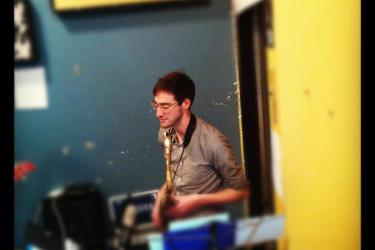

![Sarah Fay Krom, Image from [Verge], video game, 2016. Sarah Fay Krom, Image from [Verge], video game, 2016.](https://arts.ucsc.edu/sites/default/files/styles/list_page_rectangle__375_x_250_/public/SFK_Verge4.png?itok=IJsO5Ei6)

